I had never laid eyes upon hot pink rhubarb until moving to London 5 years ago. When I bought some, I was so perplexed upon slicing into it? What do you MEAN it’s hot pink on the inside TOO?!?


I have grown rhubarb at my home in France ever since I could remember and even though the stalk can get a tad rosy, it has always been mainly green. Even when buying jam or compote, it will look swampy green in France rather than bright pink. Turns out, in the UK, there is a specific method of growing and harvesting the “vegetable” that results in a hot pink stalk. This is called forced rhubarb.
 Tiktok failed to load.
Tiktok failed to load.Enable 3rd party cookies or use another browser
There are, however, many varieties of rhubarb which determine its color (see below)
Forced rhubarb season is from January to March - phew we’re nearing the end I really needed to get this newsletter out - whilst in France, our rhubarb grows at a later date, around April to July. Hot pink spring, summer green.
What Is It?
The word rhubarb comes from the latin word, rheubarbarum, meaning barbaric root. Rhubarb is a member of the buckwheat family! In the US, sometimes it’s classified as a fruit because in 1947 the USDA called it a fruit since tariffs bringing fruit into the country were lower than those bringing veggies in…
The plant is a perennial which grows into edible stalks ranging from green to pink in color. Here’s the thing - there are many varieties of rhubarb which can influence its color.
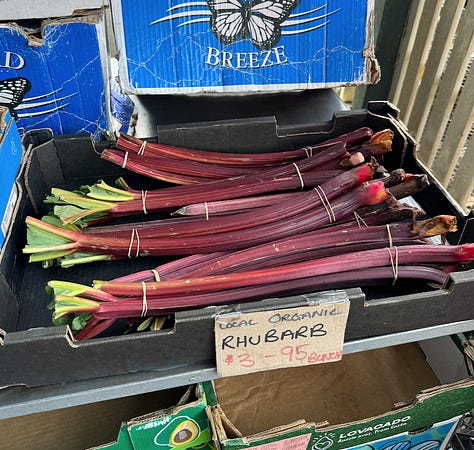

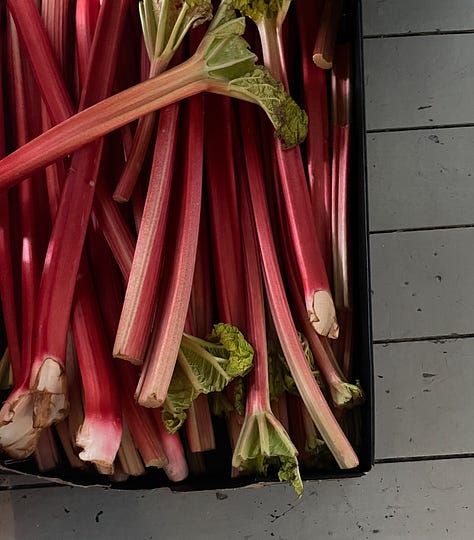
I know the pink color of some varieties makes this a tad confusing since pink rhubarb and forced rhubarb are often associated but just know that any properties that forced rhubarb has (sweetness, less stringiness) does NOT apply to all pink rhubarb. The reason for these differences in flavor and texture is due to the method of growing and harvesting, not the color. More on forced rhubarb below.
Taste
And its taste? In terms of flavor, it’s tangy. You’ll see it paired with strawberries a lot to sweeten it up but personally, I like to embrace the tang!
Some of my favorite ways to eat rhubarb:
Tarte à la Rhubarbe - my US book will include a recipe for my fail-proof French pie dough my “Mamie” taught me! This is her signature dessert and I think of her every time I make anything rhubarb because of it.
Rhubarb Compote - this week’s recipe!
What’s the different between jam and a compote? Think “sauce”, like apple “sauce” rather than glossy jam and jelly. There’s less sugar which means it’s quicker to go bad, but I love making a compote, plopping it in the fridge, and knowing it’ll have to get eaten within a few days (twist my arm).
Pink Chutney - recipe from The Condiment Book (page 105), this is a favorite chutney of mine to make during the spring and includes all pink fruit and veg. It’s bright and pairs wonderfully with different meats and soft cheeses.
Rhubarb Ginger Jam - another classic in my book!
Forced Rhubarb
Forced rhubarb, however, is less sharp and acidic in flavor than the green kind. This just means that when using it in cooking, you won’t need as much sugar to counterbalance the tanginess. It’s also less stringy than the green kind. Long story short, forced rhubarb is beautiful, sweeter, and easier to use in cooking but it’s not as straightforward to grow.
So what makes it forced rhubarb? And why is it a different color?! The specific method of cultivation requires growing rhubarb in the dark - whether in a cave or by hiding it under a pot. The aim is not to let the rhubarb see the sunlight and limit any chlorophyll development and photosynthesis. You’ll notice that the stalks are thinner due to this and the leaves more yellow. Think of it as a way to “atrophy” the plant by making it super tender and sensitive, like a dainty fairy princess veggie.
It’s primarily grown in a specific area of the UK and it’s a goal of mine to be able to visit this region soon!
The Yorkshire Forced Rhubarb Triangle
Originally from Siberia and the mountains of Mongolia, rhubarb loves a bit of chilly and wet weather. These conditions are similar to the 9 square miles in Yorkshire known as the “Forced Rhubarb Triangle”. Forcing rhubarb started in Yorkshire in 1877. By the mid 1900s there were over 200 growers but this number has dropped to about ten today. The rhubarb farmers in the area today are mainly 2nd or 3rd generation and continuing their family business, tradition, and craft.
This small region got awarded PDO (Protected Designation of Origin) status in 2010!
When grown inside, forced rhubarb is grown in the pitch black and then harvested by candlelight… I kid you NOT! The stalks grow in the dark which so they grow stick straight as they’re trying to find light by squeezing their little bodies up to the top. The resulting stalk is bright pink and the leaves are yellow rather than green. When it’s time to harvest, then it’s pulled by candlestick.
Whilst a lot of this rhubarb is grown and harvested in heated greenhouses, you can also grow forced rhubarb under large pots. My friends at Halen Mon grow their rhubarb like this! It was so great to be able to see in real life. I’ve been trying to find a suitable pot in France to do the same in our garden so stay tuned!
As always, I hope you enjoyed! Let me know what you’d like to learn more about next week and I’ll be happy to dive in.

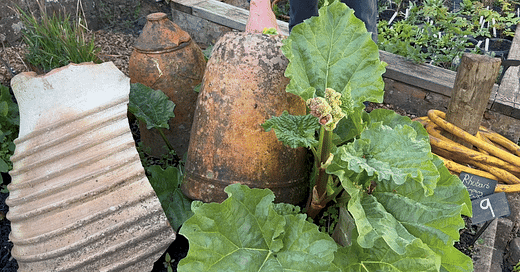


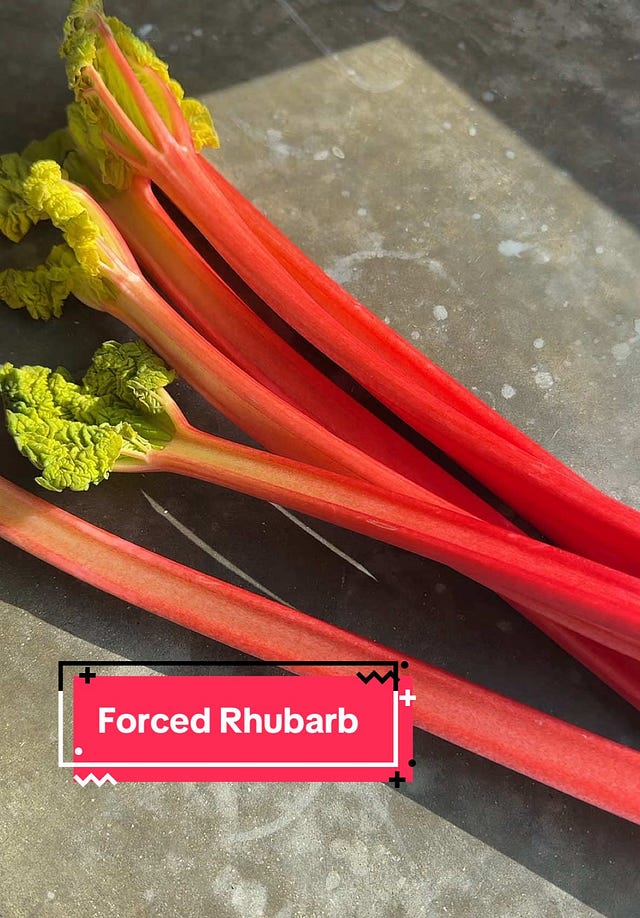




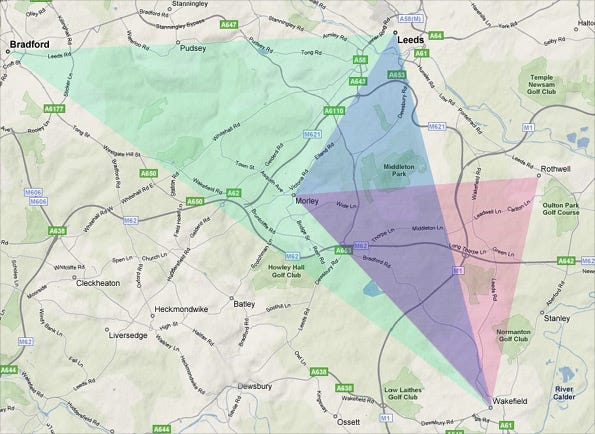


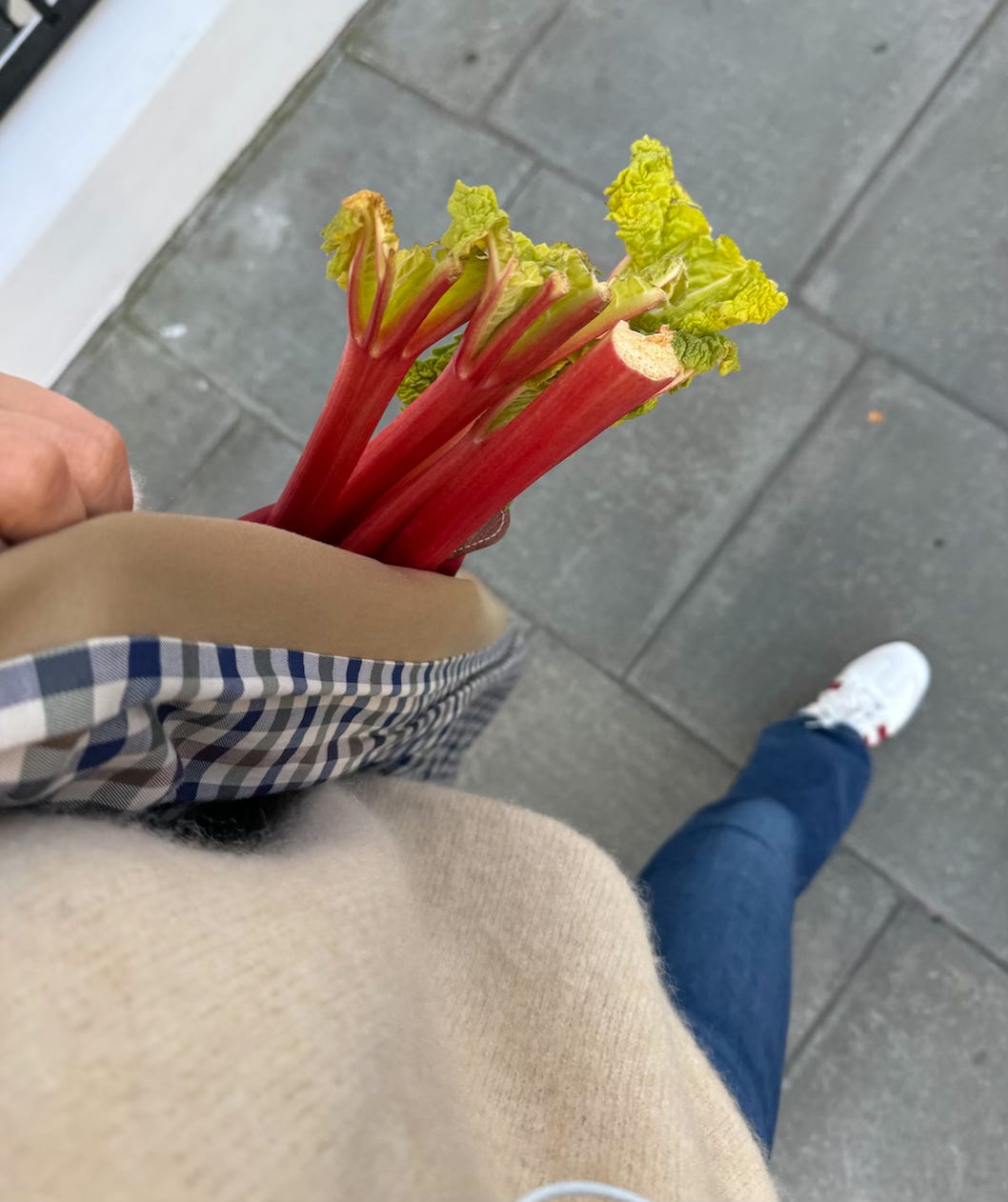
Loved this read! In Canada my nana grows red rhubarb in her garden. She makes the best stewed rhubarb (quite similar to the compote) and tangy rhubarb pies with it. Now I live in Paris and love finding the green rhubarb in markets. Such a treat in all varieties!